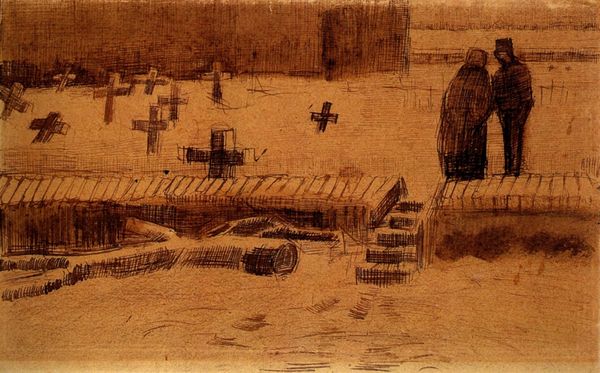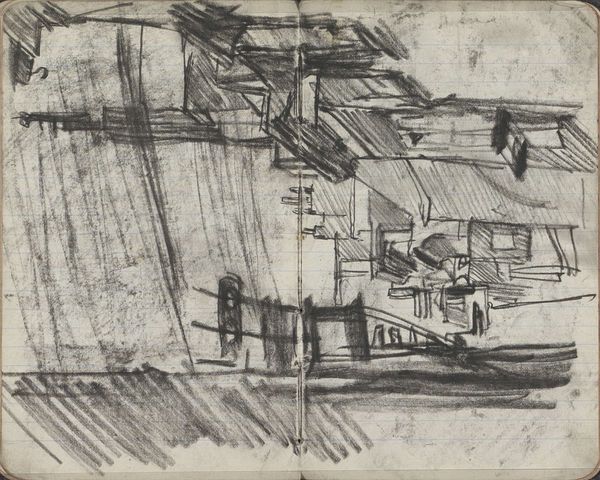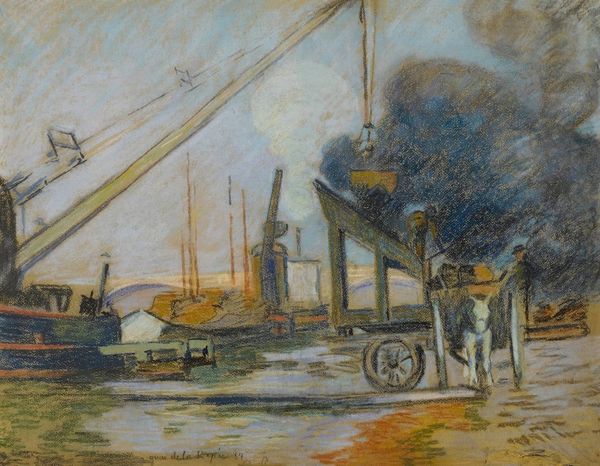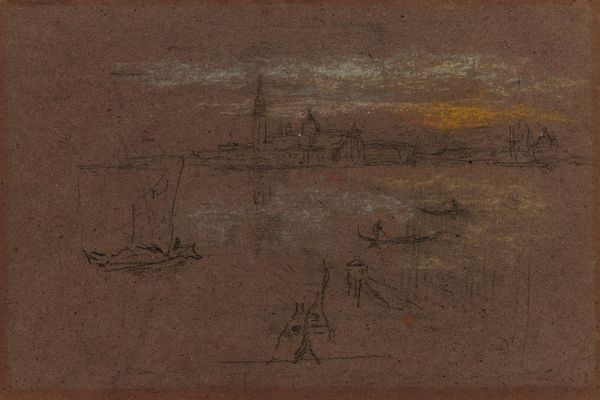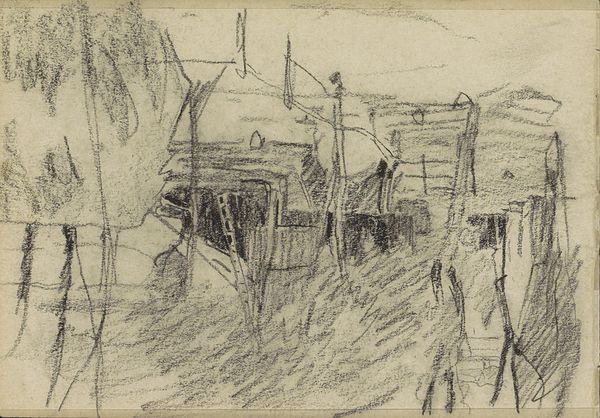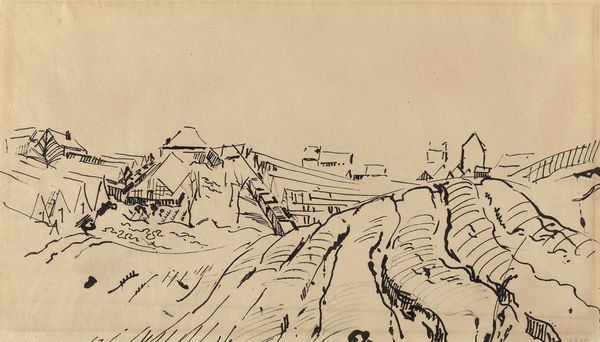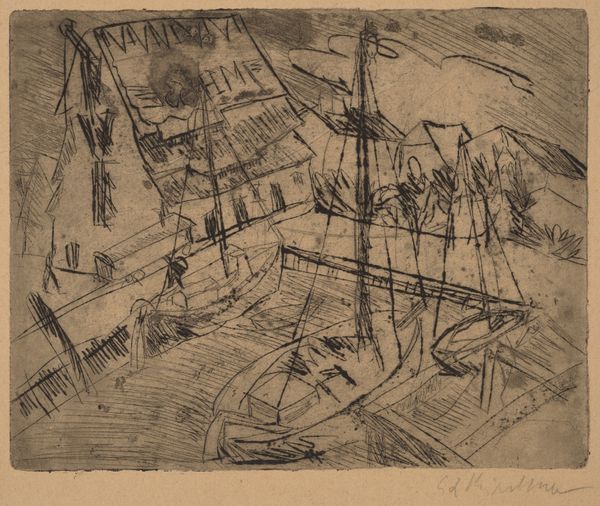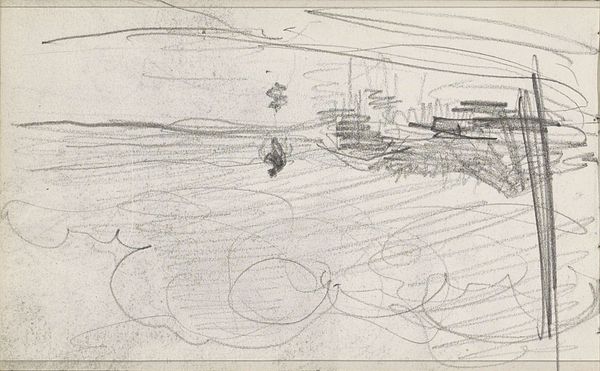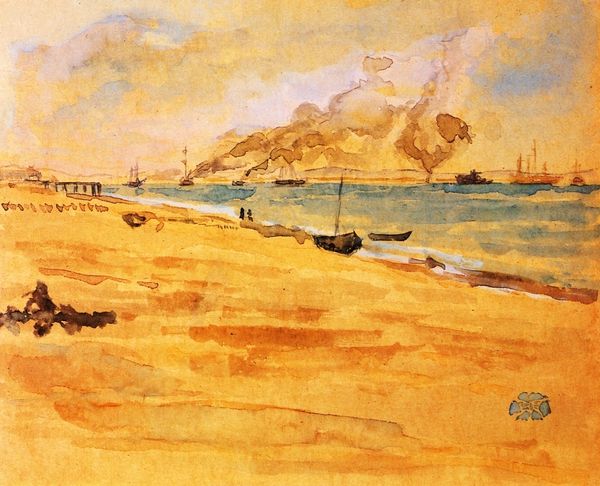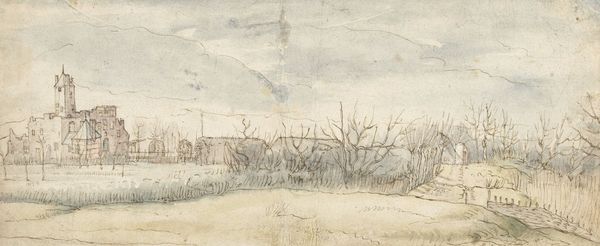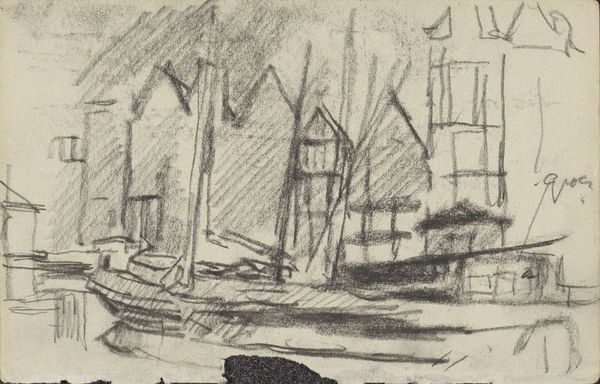
drawing, pencil
#
drawing
#
landscape
#
oil painting
#
pencil
#
cityscape
#
post-impressionism
#
mixed media
Copyright: Public domain
Curator: I'm drawn in by the overall feeling, the almost monochromatic scheme; it makes the whole scene feel muted, maybe even a little wistful. Editor: And what a scene it is. Here we have Van Gogh’s "Gardens on Montmartre and the Blute-Fin Windmill" from 1887, executed in pencil and with hints of what could be interpreted as either watercolor or possibly oil paint. This work offers an interesting view into the intersection of urban life and nature at the time. Curator: "Interesting" is one word! It almost looks like a sketch, a first impression. It's interesting to me, as a visual record of place but also as an articulation of mood—there is a real dynamism created from the quick strokes used. But you mention the urban intersecting with nature, and it really feels as though everything, buildings, flora, is given equal value and weight. Editor: Yes, exactly. Montmartre at the time was undergoing immense change, right? A transition from a semi-rural outpost to part of the urban sprawl of Paris. These windmills, including the Blute-Fin, were at one point symbols of a bygone era but also points of gathering, spaces of communal life. But within a few years of Van Gogh making this image, many of them would have been razed as the city modernized. So perhaps it's both nostalgia and recognition. Curator: So it becomes almost elegiac... he is capturing the place right as the old windmills meet their fate! It all comes full circle and makes me really notice how the work as a whole really breathes the feeling of a distinct time and place. And thinking back to what you noted on Montmartre, now it really resonates with me to hear of such transformation and to try to find any kind of visual tension between new and old—a push and pull! Editor: Definitely. What’s key here is remembering that Van Gogh, through his landscapes, often engaged with these massive shifts occurring within European society. I think, therefore, that this drawing allows us to question the socio-historical narratives often at play but so seldom considered as components of his creative approach. Curator: Yes, because ultimately, for me it circles back to his talent as an artist. It can so often become about a broader view or statement, but, in this case, you see something small and modest on the surface until it unfolds and resonates! Editor: I agree completely. And maybe in the future, we will delve even further into that.
Comments
No comments
Be the first to comment and join the conversation on the ultimate creative platform.
